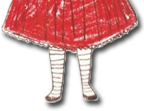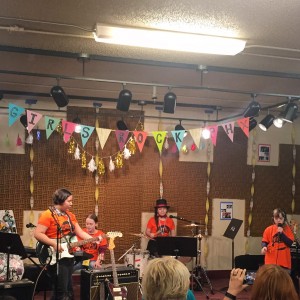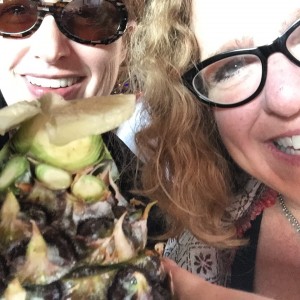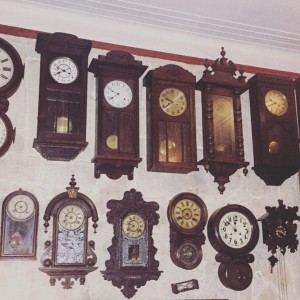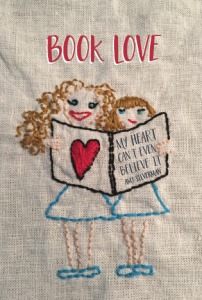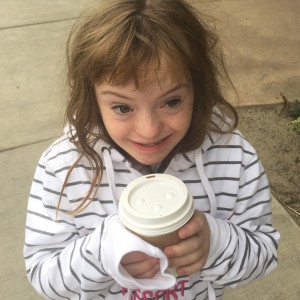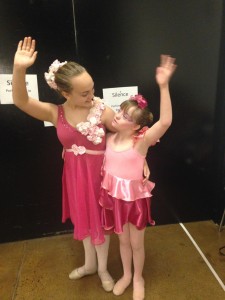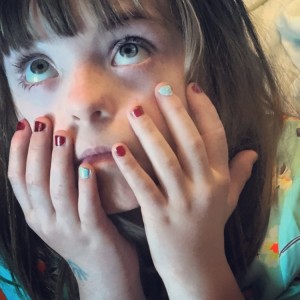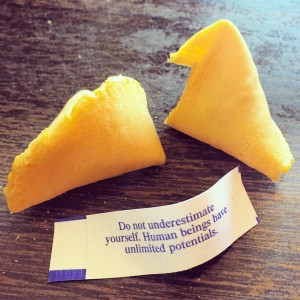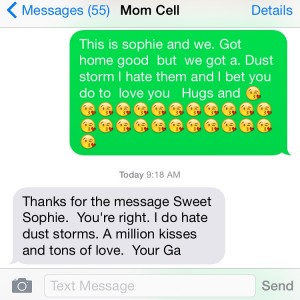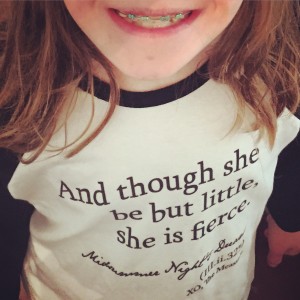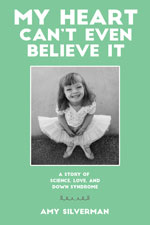
“Hey Sophie,” I asked. “If there was a pill you could take and you wouldn’t have Down syndrome anymore, would you take it?”
posted Wednesday March 16th, 2016
My dear friend Claire swears that every time she had a fever as a kid, she grew. Claire is quite tall. She might be on to something.
I feel the same about Sophie and Disneyland — but not with height. Every time we go, I think Sophie emerges a little smarter, a little more mature. Or maybe just a little more cunning.
We’ve been more times than I can count, plenty of opportunity to gather empirical evidence. When Sophie was just shy of 5, she made her first real foray into potty training after the promise of Snow White panties in exchange for dry pull-ups. At 7, she showed compassion and maturity by befriending a Disney employee who happened to be a little person, a young man who later admitted to me that he often felt left out and shunned by kids visiting the theme park.
And on our most recent trip, this weekend, Sophie demonstrated a pretty good ability to hold it together when told that her very favorite character would not be appearing at all during her time at Disneyland.
Sophie has been in love with A.A. Milne’s Piglet for as long as anyone can remember — a stuffed Piglet holding a purple butterfly was one of her earliest toys. And while Disney has devoted a corner of the park and a ride to Winnie the Pooh and friends, Piglet has remained elusive. On every one of our trips it’s been Eeyore, Tigger and Pooh in costume. No Piglet. I’ve always been told that Piglet comes out in summertime, and since this trip was later in the year than any we’ve taken (we are wintertime Disney visitors, typically) I thought there was a chance. Sophie thought there was a chance. So did the many Disney employees she encountered on our way into the park.
“Don’t promise!” I mouthed over her head to more than one well-meaning cast member.
Too late. By the time we reached the front counter at City Hall and Sophie received official word that no, Piglet was not coming out this week, hopes were high. There were tears, and one giant sob. But the kid pulled it together with uncharacteristic maturity. Within minutes she’d talked me into buying her not one but two stuffed Piglet toys, one of which she initially intended to give to Pooh but ultimately decided to keep for herself, solving her problem by asking Tigger, Eeyore and Pooh to pose for selfies with her and stuffed Piglet.
Later we returned to City Hall, where Sophie was given the gift a signed copy of all four costumed Milne characters. Not a bad haul.
“Wait,” Sophie asked as we were standing in line at Critter Country, looking serious and eyeing a six-foot tall neon orange and white furry. “Is Tigger really the real Tigger or a person in a costume?”
“Oh my god, Sophie, are you fucking kidding?” I wanted to ask. “You are almost 13. You have to ask?”
Instead I recalibrated quickly, trained over the years, and smiled. “It’s a costume,” I said quietly, so the toddlers in line with us didn’t hear.
Sophie is smart (whatever that word means, I don’t know anymore) and getting smarter all the time. But I would be lying if I didn’t admit that yes, she is hemmed in by the impact an extra 21st chromosome has on her brain. Sometimes it feels to me like she’s running through Jello; she can see where she wants to be but just can’t manage to get there without Herculean efforts. I came home from Disneyland to a thoughtful piece by Amy Julia Becker in The Atlantic about the latest research into medication that might greatly improve cognition in people with DS — and the associated debate. People don’t want to be told that there’s anything wrong with their kid, and I get that. I admire it.
But it’s not that simple. Not for me, anyway, and not for Sophie.
“Hey Sophie,” I asked this morning. “If there was a pill you could take and you wouldn’t have Down syndrome anymore, would you take it?”
She stopped midway through a bite of Cheerios, nodding without hesitation.
“Why?” I asked.
“Because then I would be like Sarah and my other friends.”
There it was — matter of fact, honest, and out there. Painful? Yes. For both Sophie and me.
Here’s the thing. These questions are incredibly tough. The topic is impossible. People with Down syndrome are different from other people. And from each other. Contrary to popular belief, there’s as much of a spectrum as there is with autism. Some people with Down syndrome may not have been able to answer my question. Did Sophie fully comprehend it? Hard to say. I’m not sure I fully comprehend it.
Should I have asked the question? I don’t know.
But I do know that it makes me very uncomfortable when parents and others talk about the limitless opportunities for our kids, about how they can do whatever they want if we just let them. Sophie teaches me new things about herself and what my expectations should be for her every day. She has proved me wrong more than once. But in many ways navigating the world is, in fact, more of a challenge for her than for her typical peers. To look away from that is to do her a disservice.
If only there was a pill we could ALL take.
“My Heart Can’t Even Believe It: A Story of Science, Love, and Down Syndrome” will be published by Woodbine House April 15. You can pre-order it from Changing Hands Bookstore and come to my release party May 1 or pre-order on Amazon. For more information about tour dates visit myheartcantevenbelieveit.com and here’s a book trailer.

